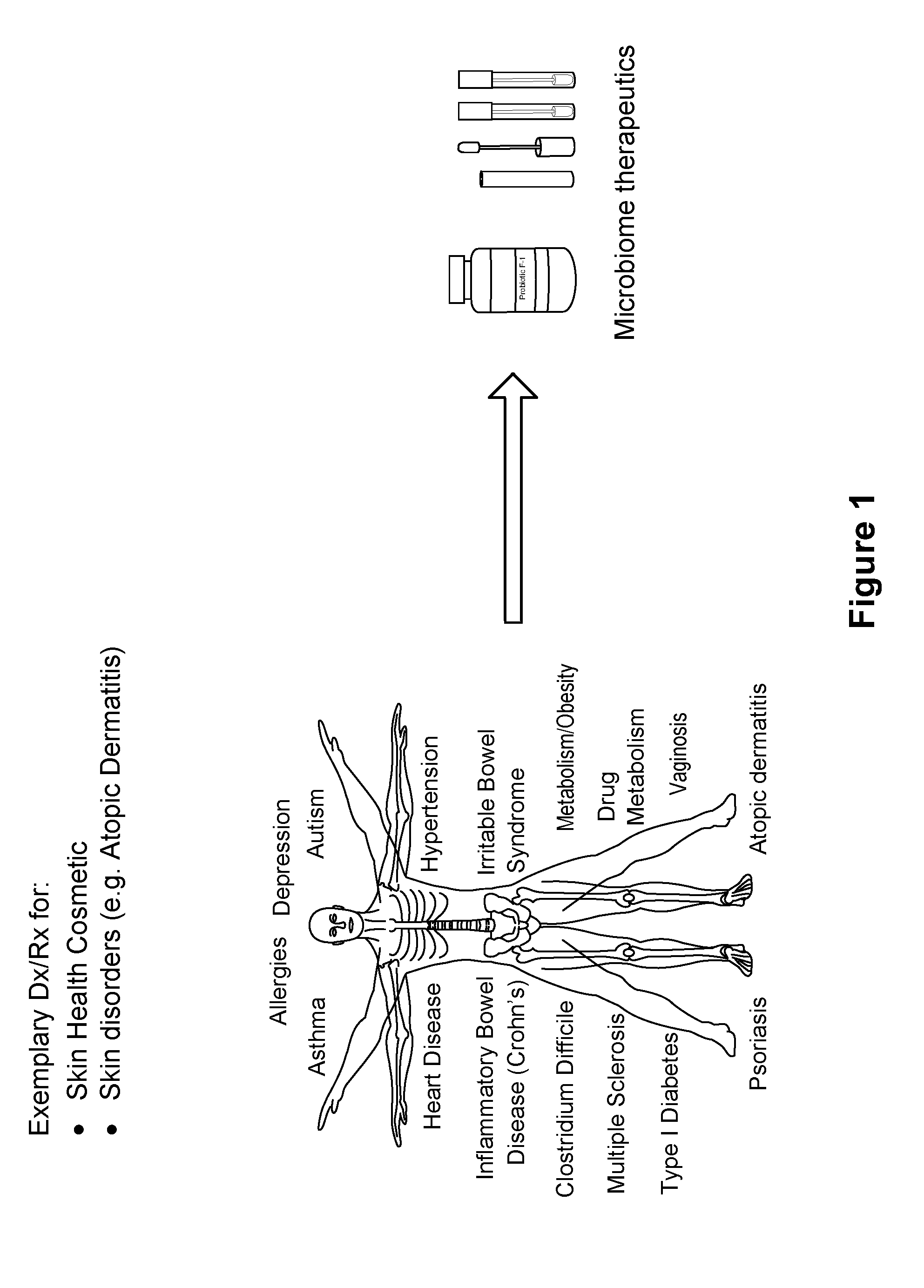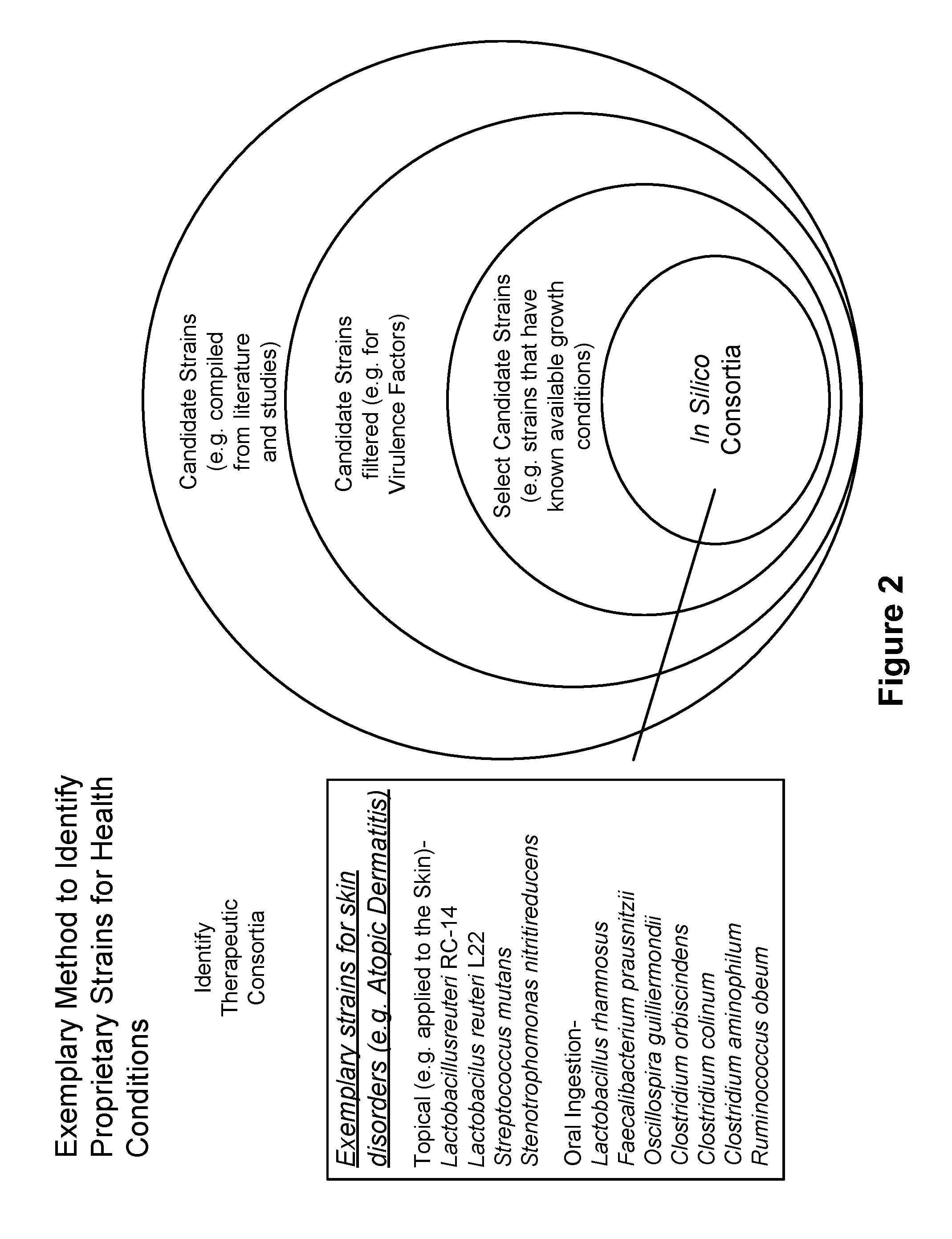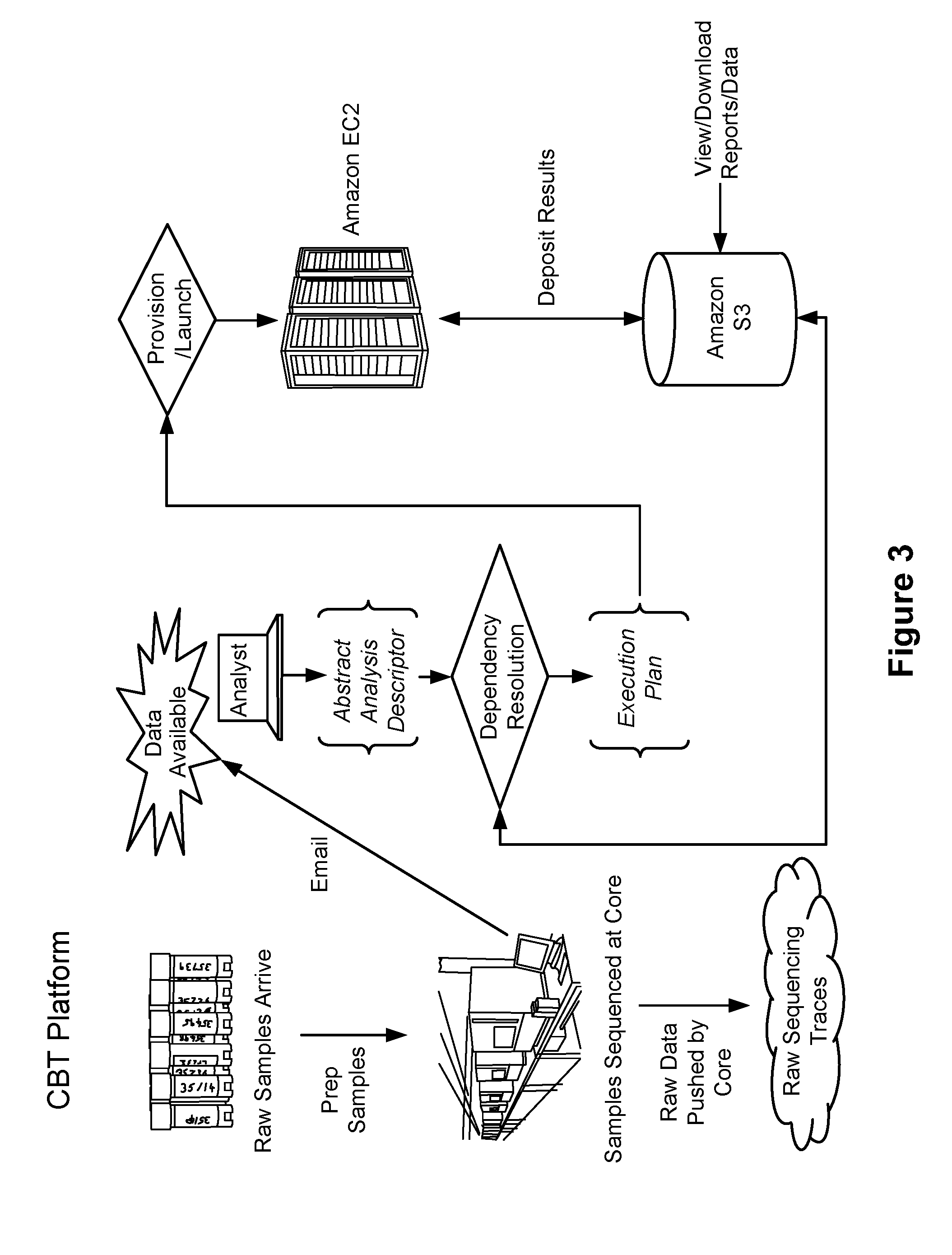Methods and compositions relating to microbial treatment and diagnosis of skin disorders
a technology of microbial treatment and skin disorders, applied in the field of methods and compositions relating to microbial treatment and diagnosis of skin disorders, can solve problems such as skin conditions and disorders, and achieve the effect of reducing the ph of the subj
- Summary
- Abstract
- Description
- Claims
- Application Information
AI Technical Summary
Benefits of technology
Problems solved by technology
Method used
Image
Examples
example 1
Microbial Compositions in Modulating Skin pH
[0385]Background:
[0386]The pH of skin can be affected by external irritants and environmental stresses. Changes in pH can affect the native microbiome of the skin and disrupt the stratum corneum barrier leading to inflammation, infection, and skin disorders.
[0387]Objective:
[0388]The purpose of the study is to assess the effect of microbial compositions of the invention in restoring normal skin pH upon exposure to external irritants that lead to alkaline conditions.
[0389]Methods:
[0390]Twenty subjects without skin disease, enter an open, controlled and randomized study.[0391]1) Experimental group: Ten subjects have skin washed with alkaline soap (pH 9.5) followed by topical application of a microbial composition having a pH of about 5.5, comprising Lactobacillus reuteri, Streptococcus mutans, Stenotrophomonas nitritireducens, hydrogen peroxide, vinegar, acetic-acid bacteria, trans-urocanic acid, PSM gamma, PSM delta, epidermin, epilancin K7,...
example 2
Treatment a Skin Disorder (e.g., Pediatric Atopic Dermatitis) with a Microbial Composition
[0397]A four-year old subject is brought to a pediatrician. The subject complains of itching and has red patches on the hands, face, scalp, feet, ankles, wrists, neck, upper chest, eyelids, and inside the bend of the elbows and knees. The affected skin of the subject is thickened, cracked, dry, and scaly. The subject also has bumps that leak fluid and crust over when scratched. The subject is diagnosed with atopic dermatitis by the pediatrician.
[0398]The pediatrician prescribes a microbial-based lotion comprising Lactobacillus reuteri, Streptococcus mutans, Stenotrophomonas nitritireducens, hydrogen peroxide, vinegar, acetic-acid bacteria, trans-urocanic acid, PSM gamma, PSM delta, epidermin, epilancin K7, epilancin 15×, pep5, and staphylococcin 1580, and serine protease Esp. The composition is to be administered topically on the affected skin area twice daily for fourteen consecutive days.
[039...
example 3
Microbial Compositions in Modulating Gut Microbiome to Treat a Skin Disorder (e.g. Atopic Dermatitis)
[0400]Background:
[0401]The gut microbiome can be involved with training the immune system. Dysbiosis of the gut microbiome can therefore lead to many downstream inflammation-based reactions that can manifest in several ways, including on the skin as with atopic dermatitis. Correcting the gut dysbiosis can therefore alleviate downstream inflammation of the skin. Microbial compositions that modulate gut microbiome can reduce, for example, inflammation and allergic reactions, which can lead to a skin disorder (e.g. atopic dermatitis).
[0402]Objective:
[0403]The purpose of the study is to assess the effect of microbial compositions of the invention in restoring normal gut microbiome function and / or treat skin disorders.
[0404]Methods:
[0405]Twenty subjects with skin disease, enter a double-blind, placebo controlled and randomized study.[0406]1) Experimental group: Ten subjects are given oral...
PUM
| Property | Measurement | Unit |
|---|---|---|
| Acidity | aaaaa | aaaaa |
| Volume | aaaaa | aaaaa |
| Volume | aaaaa | aaaaa |
Abstract
Description
Claims
Application Information
 Login to View More
Login to View More - R&D
- Intellectual Property
- Life Sciences
- Materials
- Tech Scout
- Unparalleled Data Quality
- Higher Quality Content
- 60% Fewer Hallucinations
Browse by: Latest US Patents, China's latest patents, Technical Efficacy Thesaurus, Application Domain, Technology Topic, Popular Technical Reports.
© 2025 PatSnap. All rights reserved.Legal|Privacy policy|Modern Slavery Act Transparency Statement|Sitemap|About US| Contact US: help@patsnap.com



